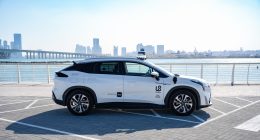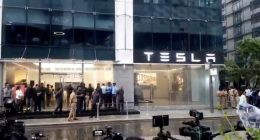Better late than never, Honda has today broken down its ambitious plans for creating a spot for itself in this oddly competitive and fledgling autonomous mobility space. The Japanese automaker, in an official blog post, mentioned that it intends to release highly-automated vehicles — which do not require any human intervention — until 2025. This is the ambitious end goal the company has set for itself at the moment.
In the meanwhile, Honda mentions that it will work on perfecting its highly-automated freeway driving system and plans to launch it officially by 2020. This self-driving system is termed as SAE Level 3, defined by the Society of Automotive Engineers, and means that you can not only keep your hands but also your eyes off the road.
The autonomous vehicle will continue to drive by itself but the system has not been perfected enough that you can sleep and let the vehicle traverse by itself. Honda is giving itself five years to perfect its highly-automated driving system, such that it’ll achieve SAE Level 4 clearance. This will be the self-driving stage when you can even sleep inside the vehicle and it will continue to drive itself to the destination. Tesla CEO Elon Musk believes the day this use case becomes a reality is just a couple years out.
Talking about this ambitious new goal, Takahiro Hachigo, President and CEO, Honda Motor Co., Ltd in a statement said:
We will strive to achieve the technological establishment of Level 4 automated driving for personal car use by around 2025. We are striving to provide our customers with a sense of confidence and trust by offering automated driving that will keep vehicles away from any dangerous situation and that will not make people around the vehicle feel unsafe.
If all this while you’ve been thinking that Honda Motors is all talk while rival technology and auto giants are already testing their self-driving systems on public roads, then you need to rethink and watch the YouTube video attached below. The Japanese giant detailed its autonomous plans at a media event, where it showed off the present stage of both of its technologies.
The media personnel were given the opportunity in ride the self-driving vehicles at the launch event. The freeway driving test-drive demonstration was conducted on a closed test course using a vehicle equipped with an advanced suite of sensors – including LiDAR, cameras and other traditional sensors being employed in other self-driving vehicles.
This was just one of the available trials as Honda showed off another common driving scenario, simulating an urban experience that we commonly know as a traffic jam, as well. This demonstration involved a blend of cameras, which are said to be enough to identify the surroundings, and Honda’s latest-gen artificial intelligence (AI) system with Deep Learning capabilities. This system was able to sense and respond to complex driving environments and situations, such as roads without proper lane markings or partial visibility at night.
Hence, Honda, who was recently ranked fifteenth among the 18 companies whose self-driving capabilities were evaluated in terms of overall advancement, has decided to take it slow and not rush the technological development process. The Japanese giant wants to provide the consumers with a safe driving experience instead of pushing incomplete and prototype technology out to them.





